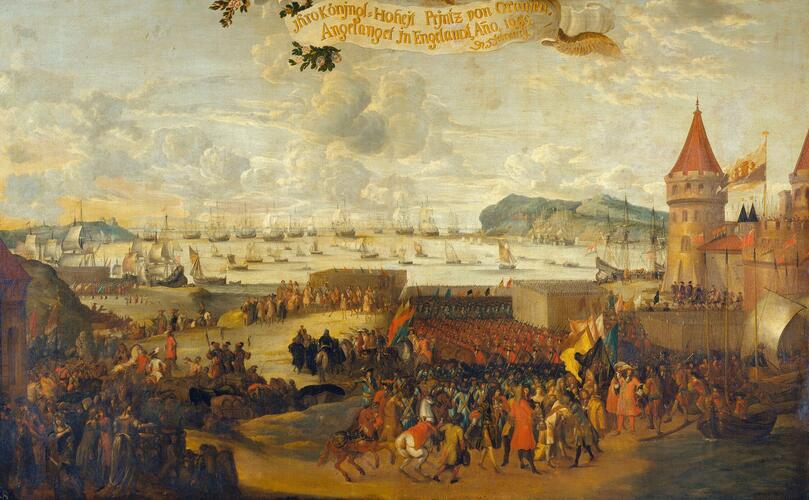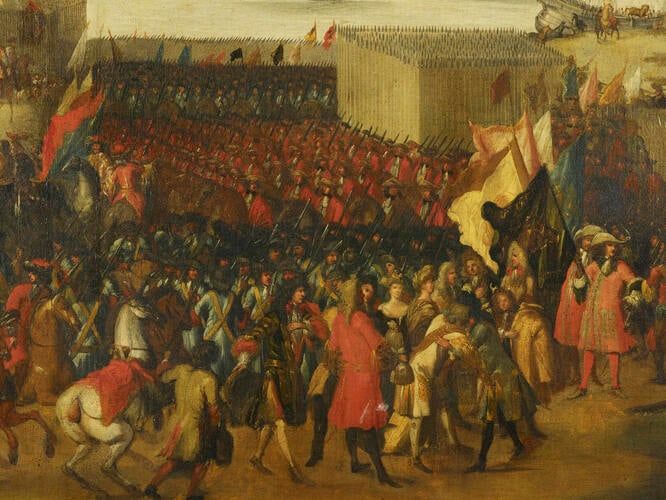-
1 of 253523 objects
William III, Prince of Orange, Arriving at Brixham c.1688-99
Oil on canvas | 143.1 x 229.9 cm (support, canvas/panel/stretcher external) | RCIN 402861
-
‘Ihro Könjngl: Hohejt Prjntz van Orajen. Angelanget jn Engelandt, Ano. 1689 d. 5 februarij’ (His Royal Highness the Prince of Orange arrival in England 5th February 1689’)
In 1688 on the I November (Julian calendar, used in England) or 11 November (Gregorian calendar, used on the Continent) William III set out from Helvoetsluis with a force of five hundred ships and 14,000 men in order to conquer Britain. He arrived on 5th/15th November at Brixham, the event depicted in this painting. He came at the invitation of a group of Whig noblemen, determined to depose the Catholic James II and create a constitutional monarchy, which is why his progress to London was virtually bloodless. He was crowned there on 21 April 1689, jointly with his Queen, Mary II, daughter of James II. This image is one of a pair showing departure and arrival which are copied from an etching by Romeyn de Hooghe dated 17th November 1688 (British Museum). Most of the incidents shown here, such as the formal greeting by deputies from Dartmouth, Exeter and Cornwall, are imaginary as William’s arrival was a surprise. This image depicts how history should have happened. The date of the inscription - 26th January/5th February 1689 - may refer to the decision made by Parliament that James II had abdicated and that William was therefore lawfully King, though this actually occurred on the 28th January.
This is one of three scenes of Royal transport between Holland and England, dealing with two different episodes: the Restoration of 1660 (in the case of CW 266, 405163) and the Glorious Revolution of 1688 (in the case of this work and CW 267, 402860); they were acquired as a group in 1846. All three are documentary in purpose, workmanlike in execution, and similarly labelled with banners bearing inscriptions in Dutch. All three are of nearly identical height, though CW 266, 406163 is narrower than the other two. The Glorious Revolution pair (this and CW 267, 402860) are obviously by the same artist; the Restoration painting (CW 266, 405163) is either also by that same artist or was brought into the group by a collector at some time between 1690 and 1846.Provenance
Purchased for Hampton Court in 1846
-
Creator(s)
Acquirer(s)
-
Medium and techniques
Oil on canvas
Measurements
143.1 x 229.9 cm (support, canvas/panel/stretcher external)
166.3 x 254.8 x 6.0 cm (frame, external)
Category
Object type(s)
Other number(s)
Alternative title(s)
The Landing of William III

